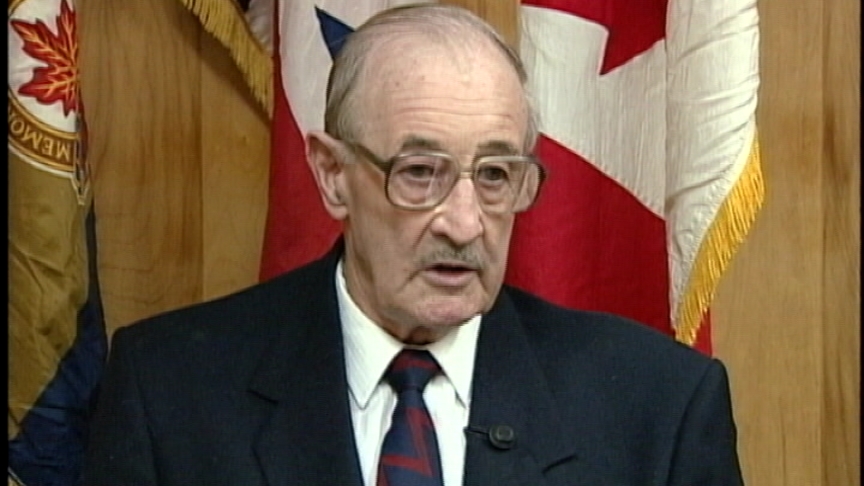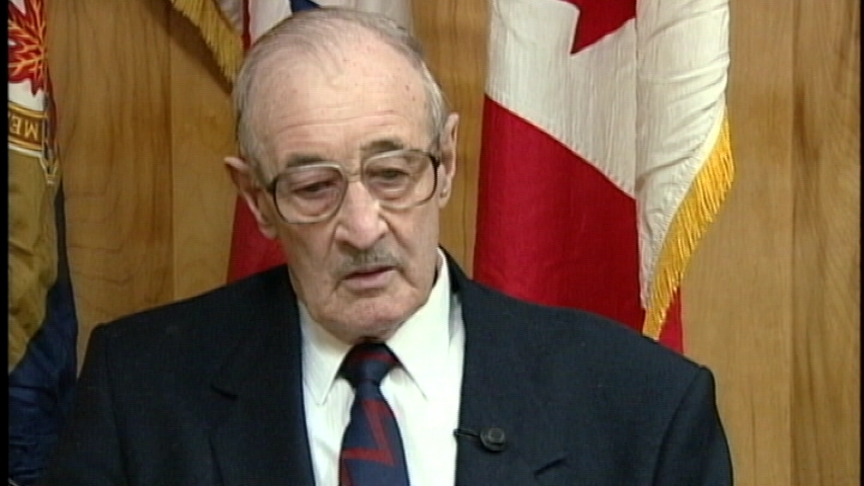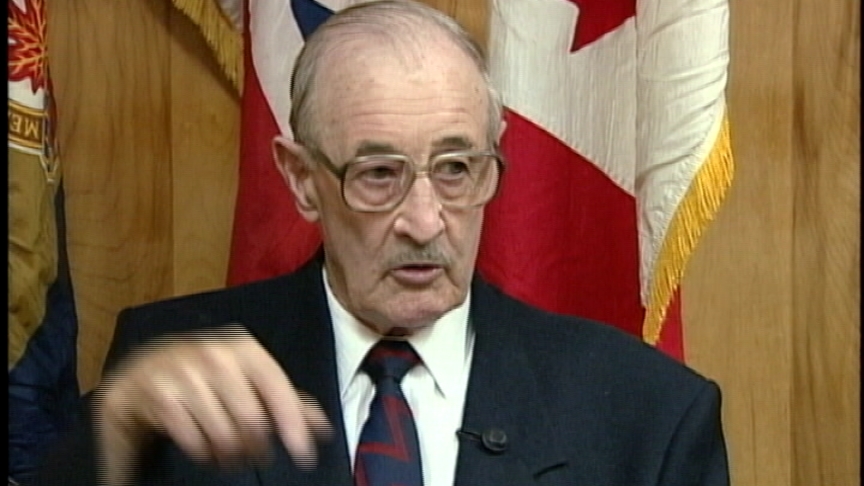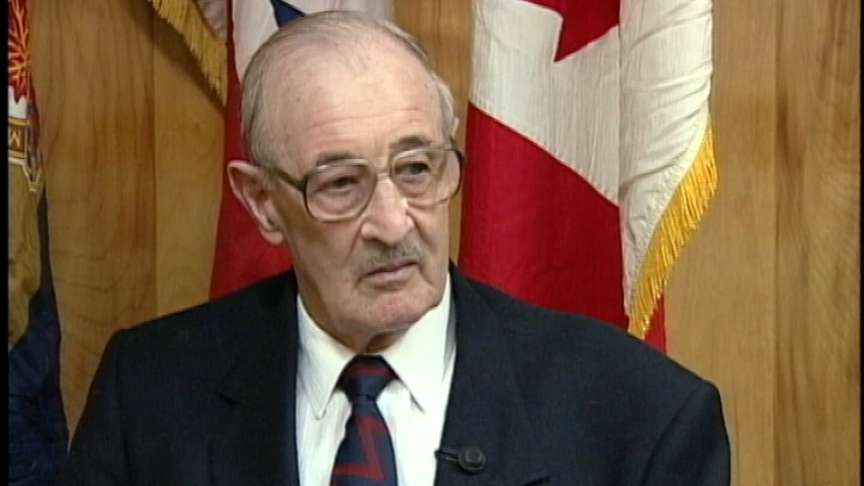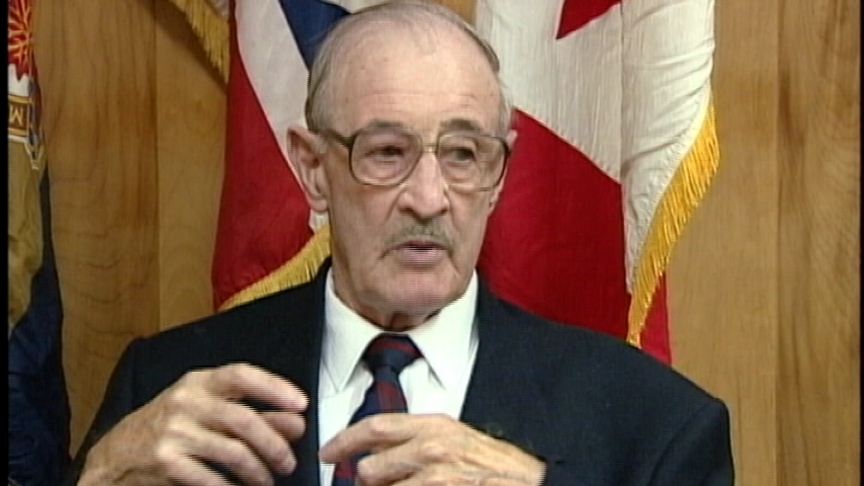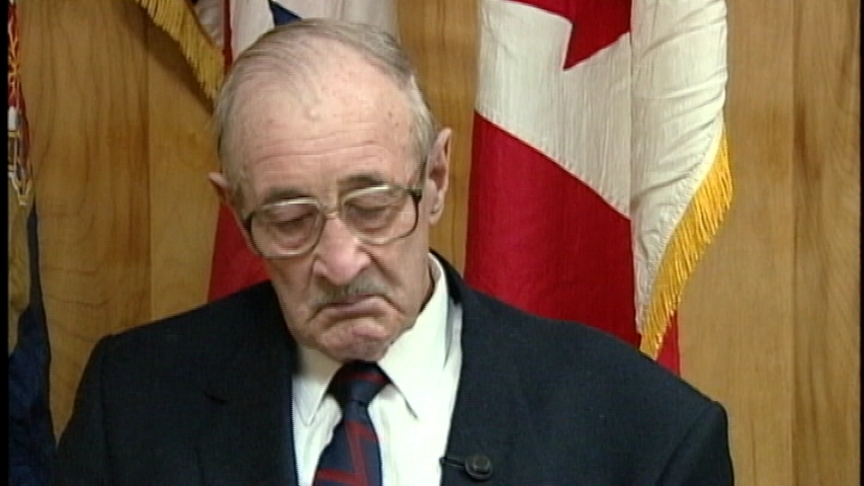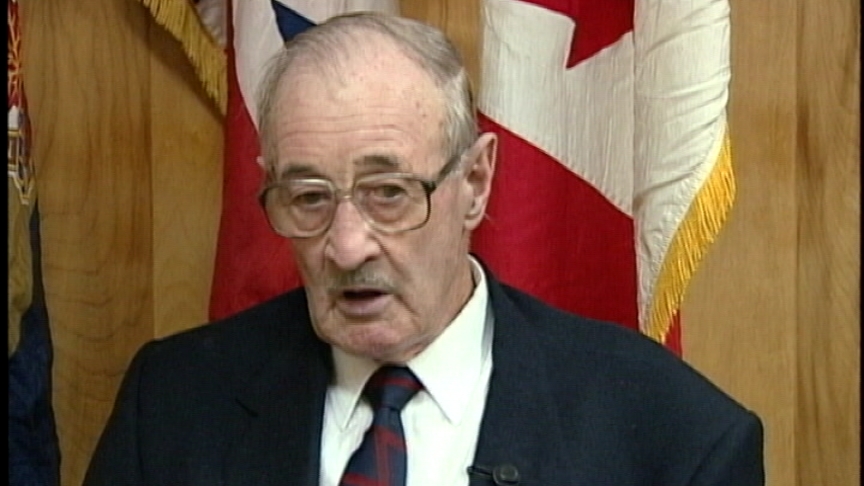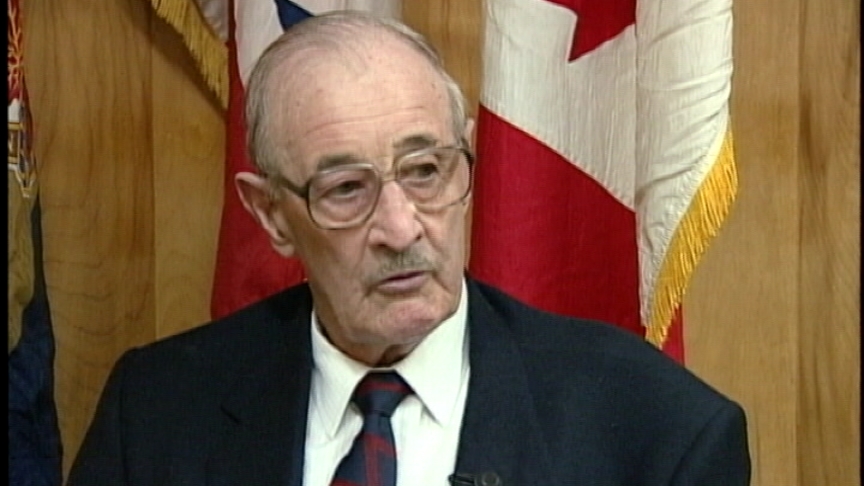And we could see our shells landing. When we hit 3,000 yards
from shore, orders came, “Now, start firing!” And each gun, four
guns and they had a platform built at the front corner of the gun
cause they had extra sides on it. And I was standing on that
platform and a guy would drag, bring a shell up to me, hand it to
me, I’d hand it to the loader. But the trouble was these
cardboard containers were fine when the, when they’re dry, but
all the stuff got soaked and they had to find enough people who
weren’t doing anything with jackknives to cut the tops off so
they could get the shells out. But we got our 150 rounds per
gun fired and they were afraid this might ruin our waterproofing
and the concussion, but it didn’t. There was six batteries of
ours, six guns, barges were firing at one and the other was
firing at the same thing. We were firing over the head of the
Winnipegs.We were with the, they were the Reginas, the Winnipegs,
and the Canadian Scottish were in our brigade.
Interviewer: That’s the Royal Winnipeg Rifles and the Regina
Rifles?
Yeah, and they were the main assault parts of that landing and
we were firing over the head of the Winnipegs.
Interviewer: So you were providing close artillery support for
the initial landing? Yes. Yeah.
Interviewer: And each gun was expected to fire 150 salvos?
150 rounds per gun.
Interviewer: Okay. And once those were finished, you were then
to make your way ashore?
Yeah. We went in there and the barges got as far as they could
and they dropped the ramp down and no way. I watched the first
SP go off and I waited to see if the front end would raise up.
It did and it floated ashore. And everyone in our barge got
ashore fine. Then we lined up, I was riding a Bren gun
carrier. I was looking over the top to see if it was gonna
float or not, and it floated ashore. And we got all lined up on
the beach and heading down the beach to where we were
supposed to exit. At that point, an officer hollered at me to,
Lieutenant Standard, “Rogers, get out of that Bren gun carrier.”
Myself and another man got out and our job was to walk ahead of
the convoy and move any dead bodies we might run over. That was
my first view of war. And you walked ahead. Anybody, any
Winnipeg dead was, you either put him back in the water or drag
him up the beach so our vehicles wouldn’t run over him.
Interviewer: Were there many casualties?
There wasn’t so many on our beach, but there were some that I
wil never forget. One in particular, he was floating
in the water, head towards the beach, and there was a hole in the
top of his helmet that you could put a, your foot through.
This was just flapping back and
that was my first actual experience of death, battlefield death.



